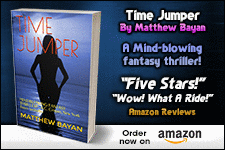Writers! 3 Steps to Showing, not Telling. Turn blah to wow.
- by Matthew Bayan
- Jul 15, 2017
- 3 min read
In writing, we have 3 main forms:
Description - We TELL what something looks like, sounds like, etc.
Summary - We TELL about something that already happened.
Immediate scene - We SHOW what is happening right now.
Remember the basic rule? Show don’t tell?
Before I show you some ways to turn telling into showing, get a printed page of your manuscript. Just one page. If you have different colored highlighters, highlight descriptions with one color, summary with a different color, and immediate scene with a third color. Or, if you don’t have highlighters, circle description in ink, underline summary in ink, and underline immediate scene in pencil. (Dialogue is immediate scene.) Look at your page. Which takes up the most space?
Our goal is to shrink description and summary and/or convert it to immediate scene.
Can we work description into immediate scene?
Example: Jack was tall. He had red hair. His archenemy at school always made fun of him.
Or
“How’s the weather up there?” Stanley said.
Jack looked down and said, “I can’t hear you, Shorty; are you standing in a hole?”
Stanley said, “Whatever you say, Duracell.”
A feet away, one of the new kids said, “Why does he call him Duracell?”
Bobby answered, “Copper top.”
The new kid nodded. “Oh, I get it. Ginger bashing. Sweet.”
So, here we see how to take blah-blah description and work it into much more interesting dialogue and convey the same information: The red head is tall and has a conflict with Stanley. Or they could be good friends who constantly give each other a hard time. Depends on where the scene goes.
Can we work summary into immediate scene?
Scott was worried about Susan. He hadn’t heard from her. He imagined all sorts of things happening to her. He spent most of the week calling her friends, but they either hadn’t heard from her or they were hiding her whereabouts from him. He checked with the college, but she hadn’t been to class. He looked under rocks, dug tunnels, called her name every night in the woods blah, blah, blah and on and on.
Or
Scott looked for Susan for a week, checking every place she hung out, every friend. On the eighth day his mailbox coughed up a letter from her. What the hell was she doing in Seattle, he thought, eyeing the postmark? He poked his right index finger under the flap and ripped open the letter so fast, he got a paper cut. (avoid data dumps)
Another way to look at description is to distill it down to some specific image that will stick in the mind of a reader.
Description vs. Image
She had intense dark brown eyes set in a wide face. Her hair was, blah, blah, blah. You know how this goes: she was tall, her nose was straight and on and on down to the color of the buttons on her shirt.
Or
Her eyes looked like cigarette burns on a blanket.
What does that image conjure? Is the woman going to turn out to be happy and carefree? The image is foreboding. The woman probably has serious problems. I first read this line 20 years ago in a book I don’t even remember. Yet, this image has stuck with me because it is so evocative
Condense a description, intensify it, make it an image.
That’s all y’all, for now.










Comments